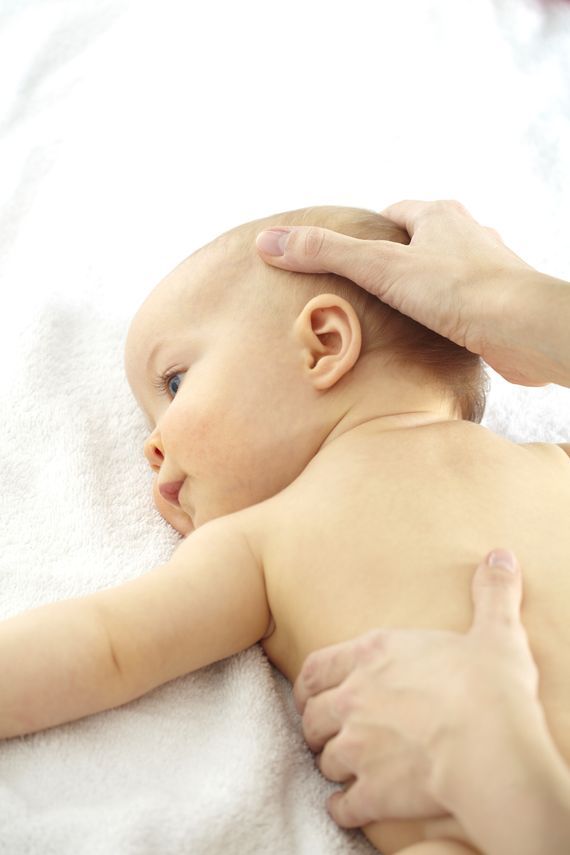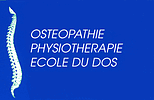OSTEOPATHY

Geneva-based Beatrix Weis adopts a structural approach to osteopathy in order to preserve or restore physical mobility
Osteopathy is a manual therapy specifically for functional conditions designed to diagnose and treat reversible lesions, to correct and prevent restrictions to mobility which are the cause of physical dysfunction and certain types of spinal, joint and organ pain.
Osteopathy is as much a preventative as a remedial therapy which is used with adults, babies and children, pregnant women and the elderly.
An osteopathic consultation begins with asking about the reason for the consultation, an investigation of the symptoms presented by the patient and an examination of the body's various systems, as well as a personal and family medical history.
Manual techniques are used to find out where the tissue structures are damaged so that their working properties, and therefore their function, can be fully re-established.
The following list is not exhaustive:
- Musculoskeletal system: neck pain, wry neck, whiplash, backache, lower back pain, joint pain (wrist, elbow, shoulder, hip, knee, ankle), groin strain, sprains, tendonitis, etc.
- Nervous system: sciatica, cruralgia, intercostal neuralgia, cervicobrachial neuralgia, occipital (Arnold's) neuralgia, etc.
- Autonomic nervous system: stress, nervousness, anxiety, fatigue, insomnia, depression, difficulties with concentration, etc.
- ENT and cranial system: headaches, functional dizziness, certain eye conditions, tinnitus (buzzing in the ears), earache, rhinitis, sinusitis, feeling of a blocked nose, etc.
- Digestive system: difficulty swallowing, nausea, vomiting, gastroesophageal reflux (GERD), abdominal pain, colitis, constipation, diarrhoea, bloatedness, etc.
- Genito-urinary system : menstrual conditions (PMS, irregular cycles), dyspareunia (painful intercourse), prevention of repeated urinary tract infections, urinary incontinence, certain infertility conditions, certain problems with impotence, etc.
- Effects of trauma: fall, collision, accident, etc.
- Post-operative effects and following surgical intervention: work on scars, etc.
- Following treatment for short- or long-term illnesses: radiotherapy, chemotherapy, tritherapy
- In cases of rheumatism, arthritis, stiffness in the joints
Craniosacral therapy
Craniosacral therapy is a form of manual treatment which uses rhythmic movements of the cerebrospinal fluid, which surrounds and bathes the brain and the spinal cord, particularly in terms of the skull and sacrum. These movements serve as therapeutic manipulation which allow a new equilibrium to be found and set the forces of self-healing in motion.
Cranial osteopathy is particularly useful for:
- rehabilitation after an accident or an illness
- any condition which involves the spinal column
- whiplash
- regulation of the musculoskeletal system, organs, the lymphatic system, hormonal system, central and autonomic nervous system.
- sleep disorders (insomnia), fatigue and depression
- conditions linked to stress and burnout
- menstrual conditions
- support during a difficult time of life
- during the course of pregnancy
- problems with concentration, learning disorders, hyperactivity
- conditions in child development (for more information specifically about children, consult our ‘treatment of babies and young children' leaflet)
- skeletal and visceral muscle dysfunction in newborns such as scoliosis, asthma and colic
- improving the quality of life and reducing the anxiety of patients affected by fibromyalgia
At the same time as medical treatment for:
- Chronic illnesses
- Digestive problems
- Migraines and headaches
- Sinusitis and tinnitis
- Orthopedic conditions
- Disease of the spinal column or muscles
- Orthopaedic conditions of the jaw
- Asthma, allergies and skin conditions
- Changes in the brain and the spinal cord
- Psychosomatic conditions

Visceral therapy
Visceral manipulation is a technique for evaluating and treating any of the organs, associated systems, and the structures surrounding them. Visceral manipulation is especially effective when combined with craniosacral therapy and other manual treatment techniques.When a person is completely healthy, all the organs are free to move between themselves and the musculoskeletal structure. The links between organs are like joints. In these joints various dysfunctions can occur, which we call visceral restrictions. These restrictions can result in the lessening of movement of the fascias, bones and muscles which surround the organs. This can lead to chronic irritation and the abnormal tensions between the organs and these joints can result in painful conditions. For example, pain in the right shoulder can arise because of a problem with the liver, and an operation for appendicitis or a scar can result in hip or pelvis problems.
Visceral manipulation treats:
- Every organ in the four body cavities (abdomen, thorax, pelvis and skull).
- Every bone, joint and muscle which forms these cavities.
- The neck fascias
- The hormonal system
- The central nervous system
- The key visceral nerves
Apart from the organs themselves, we pay particularly close attention to the links between the organs and the structures that support them.
Visceral manipulation offers a wide range of non-invasive techniques as well as highly mobilising techniques. Fine manual techniques treat the correct movement of the organs. If they are not effective, the mobilisation can be intensified with traction, pressure, leverage techniques and autonomic reflexes.
Fasciatherapy
The fascia is a connnective tissue that envelops all the body's structures (muscles, bones, nervous system, cardiovascular and lymphatic systems, organs, glands, etc.). They form a network of membranes which support and link all these structures like a "second skin".
It absorbs physical as well as emotional shocks and will react with tension in the tissues leading to loss of mobility.
Over time, this immobility in the various tissue layers, even if it is not always felt by the patient, upsets the general equilibrium of the body and can cause a range of conditions.
Fascial techniques aim to restore the mobility required for the body to function properly, and will be included in the approach that uses structural, visceral and craniosacral techniques.


